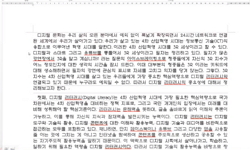Within the scheme of ‘justification by faith’in Pauline writings, the project to find the rightful place and significance of 'the good works' has never been an easy task. This paper attempts the same old issue from a different perspective, particu...
http://chineseinput.net/에서 pinyin(병음)방식으로 중국어를 변환할 수 있습니다.
변환된 중국어를 복사하여 사용하시면 됩니다.
- 中文 을 입력하시려면 zhongwen을 입력하시고 space를누르시면됩니다.
- 北京 을 입력하시려면 beijing을 입력하시고 space를 누르시면 됩니다.
https://www.riss.kr/link?id=A101856516
- 저자
- 발행기관
- 학술지명
- 권호사항
-
발행연도
2016
-
작성언어
-
-
주제어
공동서신 ; 구원 ; 선한 행실 ; 믿음 ; 칭의 ; 말씀 ; Catholic Epistles ; salvation ; good works ; faith ; justification ; word
-
KDC
231
-
등재정보
KCI등재
-
자료형태
학술저널
-
수록면
154-205(52쪽)
-
KCI 피인용횟수
1
- DOI식별코드
- 제공처
-
0
상세조회 -
0
다운로드
부가정보
다국어 초록 (Multilingual Abstract)
The letter of James functions as the introduction to the whole CE, presents its own soteriology characterized by the regeneration through the Word of God. For James, to be saved is to be born again through the word of truth(1:18) and accordingly ‘to do good works’ for James means nothing other than to embrace the very implanted word in the regenerated heart(1:21). As to the role of good works, James seems to take up what Paul left unexplored, namely, the critical importance of ‘the works of faith’for one’s salvation(cf. ‘faith working through love,’ Gal 5:6). The works necessary for salvation is the works ‘of faith’and thus the faith lacking its works is either a useless or dead one.
First Peter, taking a step further, expounds the positive and crucial role of the good works forthe new covenant people as the community of priesthood in the world(2:9-10, 12). Their lives with a‘ good conscience’ (3:16) is in fact to follow the footsteps of their Shepherd, Jesus the Christ(2:21-25), who suffered as the righteous for the unrighteous and finally was seated on the right hand of God in heaven(3:18-22). For the first letter of Peter, the path led by the good works from the good conscience is indeed the course led by Christ, which explains what the baptism really means. It is for the reborn people of God(3:21), ‘ the resident aliens and passengers’(1:1; 2:11), to reach the final destination where Christ is seated in heaven.
Second Peter highlights the divine character that is built upon faith and completed by love as its highest virtue(1:5-11). The works of the faith working through the knowledge of God, express itself in the formation the divine character(1:2-3). In Second Peter, the critical importance of the divine character lies in that it equips the church with the effective defense against the destructive delusion of the false teachers(2:1-22). Controling threatening of their false teachings on the Lord’s parousia and the Judgement(3:1-13, 14) and corrupt life patterns, Second Peter presents the divine character as the powerful and effective antidote for the church.
Lastly, Johannine letters also depict salvation through the word of life(1:1; 3:9) as James(1:18, 21) and First Peter clearly did(1:22-25). It is quite characteristic that the CE describe the salvation distinctively in terms of God’s living Word. For John, this is made far more clear and central. The Son sent by the Father is none other than the word of life(1:1; 4:9). To be saved is to have communion with the Son through the word of life and truth. Thus, the faith that overcomes the world is the faith that receives the Son, the Word of life and remain in him, that is, the love of the Father. The terms such as koinwni,a and me,nw which involve the concept of the mutual indwelling between God and his new covenant people, explains the source of the love as the sum of the good works. As the critical manifestation of having eternal life, the good works of love is affirmed as the most indispensible sign for the authentic community of God in the new aeon.
In sum, the CE representing the probably ‘major’Apostolic traditions, ‘the pillars of the church’just as Paul himself puts it(Gal 2:9), emphasizes the word of life as means and the principle both for the regeneration and sanctification(James 1:18, 21; 1 Pet 1:22-25; 1 John 1:1; 3:9).
Within the scheme of ‘justification by faith’in Pauline writings, the project to find the rightful place and significance of 'the good works' has never been an easy task. This paper attempts the same old issue from a different perspective, particularly in light of the Catholic Epistles(CE). Adapting‘ the hermeneutics of the cannonical process’, the recent scholarship of the CE treats the seven letters of the CE as a coherent cannonical and theological unity. Based on this ‘new perspective on the CE’, this paper aims to search and sum up the CE’s ‘assumed’ unified teachings on the salvation and the good works.
The letter of James functions as the introduction to the whole CE, presents its own soteriology characterized by the regeneration through the Word of God. For James, to be saved is to be born again through the word of truth(1:18) and accordingly ‘to do good works’ for James means nothing other than to embrace the very implanted word in the regenerated heart(1:21). As to the role of good works, James seems to take up what Paul left unexplored, namely, the critical importance of ‘the works of faith’for one’s salvation(cf. ‘faith working through love,’ Gal 5:6). The works necessary for salvation is the works ‘of faith’and thus the faith lacking its works is either a useless or dead one.
First Peter, taking a step further, expounds the positive and crucial role of the good works forthe new covenant people as the community of priesthood in the world(2:9-10, 12). Their lives with a‘ good conscience’ (3:16) is in fact to follow the footsteps of their Shepherd, Jesus the Christ(2:21-25), who suffered as the righteous for the unrighteous and finally was seated on the right hand of God in heaven(3:18-22). For the first letter of Peter, the path led by the good works from the good conscience is indeed the course led by Christ, which explains what the baptism really means. It is for the reborn people of God(3:21), ‘ the resident aliens and passengers’(1:1; 2:11), to reach the final destination where Christ is seated in heaven.
Second Peter highlights the divine character that is built upon faith and completed by love as its highest virtue(1:5-11). The works of the faith working through the knowledge of God, express itself in the formation the divine character(1:2-3). In Second Peter, the critical importance of the divine character lies in that it equips the church with the effective defense against the destructive delusion of the false teachers(2:1-22). Controling threatening of their false teachings on the Lord’s parousia and the Judgement(3:1-13, 14) and corrupt life patterns, Second Peter presents the divine character as the powerful and effective antidote for the church.
Lastly, Johannine letters also depict salvation through the word of life(1:1; 3:9) as James(1:18, 21) and First Peter clearly did(1:22-25). It is quite characteristic that the CE describe the salvation distinctively in terms of God’s living Word. For John, this is made far more clear and central. The Son sent by the Father is none other than the word of life(1:1; 4:9). To be saved is to have communion with the Son through the word of life and truth. Thus, the faith that overcomes the world is the faith that receives the Son, the Word of life and remain in him, that is, the love of the Father. The terms such as koinwni,a and me,nw which involve the concept of the mutual indwelling between God and his new covenant people, explains the source of the love as the sum of the good works. As the critical manifestation of having eternal life, the good works of love is affirmed as the most indispensible sign for the authentic community of God in the new aeon.
In sum, the CE representing the probably ‘major’Apostolic traditions, ‘the pillars of the church’just as Paul himself puts it(Gal 2:9), emphasizes the word of life as means and the principle both for the regeneration and sanctification(James 1:18, 21; 1 Pet 1:22-25; 1 John 1:1; 3:9).
참고문헌 (Reference)
1 채영삼, "지붕 없는 교회: 야고보서의 이해" 이레서원 2012
2 권연경, "옛 관점과 새 관점의 충돌 - 주석적 평가와 제안" 한국개혁신학회 28 : 81-116, 2010
3 채영삼, "야고보서의 tel-어군(語群)의 사용과 ‘온전함’의 의미" 한국복음주의신약학회 11 (11): 93-130, 2012
4 채영삼, "십자가와 선한 양심: 베드로전서의 이해" 이레서원 2014
5 채영삼, "신학(神學)과 ‘신적 성품(性品)’: 베드로후서 1:1-11에 따른 신학의 의미" 한국복음주의신학회 62 : 253-295, 2012
6 최영숙, "선한 양심과 믿음- 바울의 ‘양심’과 디모데전서의 ‘선한 양심’의 비교" 한국복음주의신약학회 14 (14): 544-570, 2015
7 박경미, "베드로전서의 집 없는 나그네들과 하나님의 집" 90 : 131-151, 1995
8 채영삼, "마태의 산상수훈(마 5-7장)에 대한 구원론적 해석과 마태의 기독론" 백석신학대학교 13 : 141-168, 2007
9 채영삼, "마음에 심긴 말씀"
10 채영삼, "교회란 무엇인가?(2): 베드로전서 2:9 주해" 25 : 211-226, 2013
1 채영삼, "지붕 없는 교회: 야고보서의 이해" 이레서원 2012
2 권연경, "옛 관점과 새 관점의 충돌 - 주석적 평가와 제안" 한국개혁신학회 28 : 81-116, 2010
3 채영삼, "야고보서의 tel-어군(語群)의 사용과 ‘온전함’의 의미" 한국복음주의신약학회 11 (11): 93-130, 2012
4 채영삼, "십자가와 선한 양심: 베드로전서의 이해" 이레서원 2014
5 채영삼, "신학(神學)과 ‘신적 성품(性品)’: 베드로후서 1:1-11에 따른 신학의 의미" 한국복음주의신학회 62 : 253-295, 2012
6 최영숙, "선한 양심과 믿음- 바울의 ‘양심’과 디모데전서의 ‘선한 양심’의 비교" 한국복음주의신약학회 14 (14): 544-570, 2015
7 박경미, "베드로전서의 집 없는 나그네들과 하나님의 집" 90 : 131-151, 1995
8 채영삼, "마태의 산상수훈(마 5-7장)에 대한 구원론적 해석과 마태의 기독론" 백석신학대학교 13 : 141-168, 2007
9 채영삼, "마음에 심긴 말씀"
10 채영삼, "교회란 무엇인가?(2): 베드로전서 2:9 주해" 25 : 211-226, 2013
11 채영삼, "공동서신의 새 관점" 한국신약학회 21 (21): 761-796, 2014
12 신인철, "“순전하고 신령한 젖”의 재해석(벧전 2:1-3)" 한국복음주의신약학회 11 (11): 1-37, 2012
13 채영삼, "“마음에 심긴 도를 온유함으로 받으라”: 야고보서 1:21b의 신학적 중심성" 한국복음주의신약학회 9 (9): 465-515, 2010
14 Donald J. Verseput, "Wisdom, 4Q185, and the Epistle of James" 117 (117): 1998
15 J. Daryl Charles, "Virtue amidst Vice" Sheffield Academic Press 1997
16 채영삼, "Toward a Theology of the Words, not just the Works, in the Epistle of James" 한국복음주의신약학회 13 (13): 356-391, 2013
17 J. D. Dryden, "The Sense of spe,rma in 1 John 3:9 in Light of Lexical Evidence" 11 : 96-, 1998
18 J. H. Yoder, "The Politics of Jesus" 163-192, 1972
19 N. T. Wright, "The Paul Debate: Critical Questions for Understanding the Apostle" Baylor University Press 2015
20 Peter H. Davids, "The Letters of 2 Peter and Jude" Eerdmans 178-, 2006
21 Douglas Moo, "The Letter of James (The Pillar New Testament Commentary)" Eerdmans 2000
22 Ruth B. Edwards, "The Johannine Literature" Sheffiled Academic Press 163-164, 2000
23 Georg Strecker, "The Johannine Letters: A Commentary on 1, 2, and 3 John (Hermenia)" Fortress 1996
24 R. Schnackenberg, "The Johannine Epistles: Introduction and Commentary" Fortress 173-174, 1998
25 J. W. C. Wand, "The General Epistles of St. Peter and St. Jude" Methuen 131-, 1934
26 John Piper, "The Future of Justification: A Response to N. T. Wright" Crossway Books 2007
27 Reinhard Feldmeier, "The First Letter of Peter: A Commentary on the Greek Text" Taylor University Press 2-5, 2008
28 Peter H. Davids, "The Epistle of James: A Commentary on the Greek Text" Eerdmans 1982
29 Chrys C. Caragounis, "The Development of Greek and the New Testament: Morphology, Syntax, Phonology, and Textual Transmission" Baker Academic 90-, 2006
30 Robert W. Wall, "The Catholic Epistles & Apostolic Tradition: A New Perspective on James to Jude" Baylor University Press 13-40, 2009
31 Robert W. Wall, "The Catholic Epistles & Apostolic Tradition: A New Perspective on James to Jude" Baylor University Press 2009
32 John Painter, "The Catholic Epistles & Apostolic Tradition: A New Perspective on James to Jude" Baylor University Press 161-, 2009
33 Robert W. Wall, "The Catholic Epistles & Apostolic Tradition: A New Perspective on James to Jude" Baylor University Press 154-155, 2009
34 Karl-Wilhelm Niebuhr, "The Catholic Epistles & Apostolic Tradition: A New Perspective on James to Jude" Baylor University Press 2009
35 Bruce M. Metzger, "The Canon of the New Testament: Its Origin, Development and Significance" Oxford Universtiy Press 203-207, 1987
36 Colin G. Kruse, "Sin and Perfection in 1 John" 51 : 2003
37 Mark E. Taylor, "Recent Scholarship on the Structure of James" 3 (3): 112-, 2004
38 김세윤, "Paul and the New Perspective: Second Thoughts on the Origin of Paul’s Gospel" Eerdmans 2002
39 David Nienhuis, "Not by Paul Alone: The Formation of the Catholic Epistles Collection and the Christian Canon" Baylor University Press 4-, 2007
40 James D. G. Dunn, "New Perspective on Paul: Collected Essays" Mohr-Siebeck 2005
41 Terry Griffith, "Keep Yourselves from Idols: A New Look at 1 John" Sheffield Academic Press 78-, 2002
42 N. T. Wright, "Justification: God’s Plan & Paul’s Vision" IVP Academic 2009
43 D. A. Carson, "Justification and Variegated Nomism, (2 vols)" Mohr-Siebeck 2004
44 Richard J. Bauckham, "Jude, 2 Peter" Nelson Reference & Electronic 1983
45 Gene L. Green, "Jude & 2 Peter" Baker Academic 2008
46 R. Bauckham, "James: Wisdom of James, Disciple of Jesus the Sage" Routledge 141-, 1999
47 Craig L. Blomberg, "James (Exegetical Commentary on the New Testament)" Zondervan 2008
48 Ralph P. Martin, "James" Word 214-215, 1988
49 Edward Malatesta, "Interiority and Covenant: A Study of ei=nai evn and me,nein evn In the First Letter of Saint John (Analecta Biblica)" Biblical Institute Press 93-331, 1978
50 Lewis R. Donelson, "I & II Peter and Jude" Westminster, John Knox Press 209-210, 2010
51 Joshep H. Theyer, "Greek-Englisch Lexicon of the New Testament" Zondervan 344-, 1976
52 Eckhard J. Schnabel, "Early Christian Mission (1 vol, Jesus and The Twelve)" IVP 819-842, 2004
53 Hans J. Eckstein, "Der Begriff Syneidesis bei Paulus: Eine neutestamentlich-exegetische Untersuchung zum 'Gewissensbegriff'" Mohr Siebeck 109-, 1983
54 Robert W. Wall, "Cannonical Function of 2 Peter" 9 (9): 76-81, 2001
55 Darian Lockett, "An Introduction to the Catholic Epistles" T&T Clark 2012
56 James H. Ropes, "A Critical and Exegetical Commentary on the Epistle of St. James" T. & T. Clark 166-167, 1916
57 J. N. D. Kelly, "A Commentary on the Epistle of Peter and of Jude" A & C Black 1969
58 Martin Dibelius, "A Commentary on the Epistle of James(Hermeneia)" Fortress Press 1976
59 Leonhard Goppelt, "A Commentary on 1 Peter" Eerdmans 127-, 1993
60 Jerome H. Neyrey, "2 Peter, Jude" Doubleday 1993
61 Robert W. Yarbrough, "1-3 John (BECNT)" Baker Academic 17-21, 2008
62 Paul J. Achtemeier, "1 Peter: A Commentary on First Peter (Hermeneia)" Fortress Press 1996
63 John H. Elliott, "1 Peter (The Anchor Yale Bible)" 2000
64 Joel B. Green, "1 Peter"
65 Douglas Harink, "1 & 2 Peter" Brazos Press 62-63, 2009
66 채영삼, ""오직 선한 양심이 하나님을 향하여 찾아가는 것이라": 베드로전서 3:21c의 번역과 해석" 한국신약학회 16 (16): 589-628, 2009
동일학술지(권/호) 다른 논문
-
- 한국복음주의신약학회
- 장석조(Suk Jo Jang)
- 2016
- KCI등재
-
부자와 나사로 비유와 누가의 통합시도 - 누가복음 16장 19~31절을 중심으로 -
- 한국복음주의신약학회
- 전병희(Byeng Hee Jeon)
- 2016
- KCI등재
-
요한복음 21:1-11의 내러티브 읽기 - 베드로의 인물성격과 역할을 중심으로 -
- 한국복음주의신약학회
- 김문현(Moon Hyun Kim)
- 2016
- KCI등재
-
- 한국복음주의신약학회
- 김경식(Kyoung Shik Kim)
- 2016
- KCI등재
분석정보
인용정보 인용지수 설명보기
학술지 이력
| 연월일 | 이력구분 | 이력상세 | 등재구분 |
|---|---|---|---|
| 2023 | 평가예정 | 재인증평가 신청대상 (재인증) | |
| 2020-01-01 | 평가 | 등재학술지 선정 (재인증) |  |
| 2019-12-01 | 평가 | 등재후보로 하락 (계속평가) |  |
| 2016-01-01 | 평가 | 등재학술지 유지 (계속평가) |  |
| 2012-01-01 | 평가 | 등재학술지 선정 (등재후보2차) |  |
| 2011-01-01 | 평가 | 등재후보 1차 PASS (등재후보1차) |  |
| 2009-06-19 | 학회명변경 | 영문명 : 미등록 -> Korean Evangelical Society of New Testament Studies |  |
| 2009-01-01 | 평가 | 등재후보학술지 선정 (신규평가) |  |
학술지 인용정보
| 기준연도 | WOS-KCI 통합IF(2년) | KCIF(2년) | KCIF(3년) |
|---|---|---|---|
| 2016 | 0.48 | 0.48 | 0.38 |
| KCIF(4년) | KCIF(5년) | 중심성지수(3년) | 즉시성지수 |
| 0.33 | 0.27 | 0.729 | 0.2 |




 KCI
KCI 스콜라
스콜라






